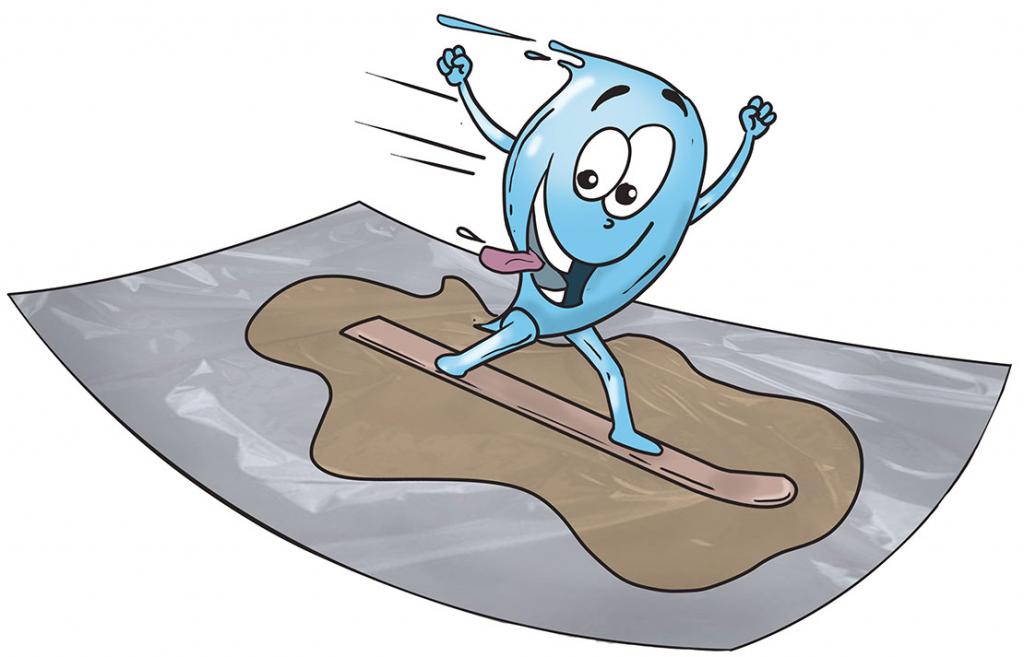
Have you ever wondered what happens when you mix water and oil? I was curious to know why they don’t mix so I did an amazing experiment to find out—and discovered something truly magical.
I took a plastic (polyethylene) paper and put some oil on the plastic paper. Then, I dropped a single but large water droplet onto the oily surface. Guess what? The water droplet didn't mix with the oil! Instead, it did something incredible.
 The water droplet started to move and change shape—like it was alive! It formed tiny beads and rolled around the plastic avoiding the oil. I was amazed! I showed my parents and my friends. I told them that I can cut water! How was this even possible?!
The water droplet started to move and change shape—like it was alive! It formed tiny beads and rolled around the plastic avoiding the oil. I was amazed! I showed my parents and my friends. I told them that I can cut water! How was this even possible?!
My parents explained that this phenomena is called the ‘Lotus Effect’. The oily surface is hydrophobic (water-repelling), causing the water droplet to behave in this unique way. The water molecules stick together, forming beads that can roll around.
Then I remembered that I have seen a similar thing earlier when we visited a lotus pond near Alibaug. The water droplets danced around the oily surface of the lotus leaf.
This happens because the oil molecules on the plastic surface are arranged in a special way, making it difficult for water molecules to bond with them.
This creates a barrier, forcing the water droplet to separate and move around the leaf.
This experiment showed that even everyday materials can hold secrets and surprises.
Who knew that mixing water and oil on a plastic paper could be so fascinating? We learned that science is all around us, waiting to be discovered.
What I learned?
I am excited to try more experiments and uncover more secrets of the natural world. Who knows what other magic awaits us?